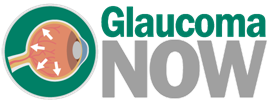Dr. Paul Harasymowycz Bio
If you are looking for local services or treatment from your Local Ophthalmologist in the office or hospital from a Ophthalmologist, contact a provider such as ( Dr. Paul Harasymowycz ) is in good standing with the College of Physicians and Surgeons ( Dr. Paul Harasymowycz ) Is in good standing with the College of Physicians and Surgeons of Canada, ( Dr. Paul Harasymowycz ) Is in good standing with theCanadian Ophthalmological Society ( Dr. Paul Harasymowycz ) Is in good standing with the and the Canadian Medical Association
The speaker in the video may have no association with ( Dr. Paul Harasymowycz, Ophthalmologist Montreal, QC ).
( Dr. Paul Harasymowycz, Ophthalmologist Montreal, QC ), may talk about some of the conditions and some of the treatment options shown on the videos. Always talk with your Local Ophthalmologist about the information you learnt from the videos in regards to treatments for What is Glaucoma? and procedures the Local Ophthalmologist could perform and if they would be appropriate for you. Remember good information is the corner stone to understanding your condition or disease.
A local ophthalmologist is different from a local optometrist in that an optometrist doesn’t perform surgery. If you have a condition known as ocular hypertension, which is a result of high ocular pressure, your risk of developing glaucoma increases.Your optometrist or ophthalmologist may want to lower your IOP as a preventative measure.
Please contact ( Dr. Paul Harasymowycz, Ophthalmologist Montreal, QC ) to enquire if this health care provider is accepting new patients.Patients are often concerned that an injection of material into their eye will be a painful or scary procedure. In fact, after the first or second injection, patients become quite at ease with the idea that they will have these injections, Following an intravitreal injection, you may feel pressure or grittiness in the eye, slight bleeding on the white of the eye and floaters in your vision. These are temporary and normal. As glaucoma progresses, it damages more and more of your optic nerve fibers, leading to vision loss. With primary open-angle glaucoma, the fluid can’t effectively flow back out of your eye. Angle-closure glaucoma occurs when the iris of the eye closes off the drainage angle completely, causing an increase in IOP pressure and damage to the optic nerve.
Glaucoma is a condition where there is increased pressure within the eyeball, causing damage to the optic nerve and gradual loss of sight. If glaucoma is detected early preventative measures can be taken to save vision loss.
When the pressure inside the eye becomes elevated, it can cause compression and damage to the retinal fibers that make up the optic nerve. These fibers are responsible for transmitting visual signals to the brain, allowing us to see.
Education
Dr. Paul Harasymowycz, Ophthalmologist, Montreal QC, Glaucoma NOW
This content is for informational purposes only, and is not intended to be a substitute for professional medical advice, diagnosis or treatment. Always seek the advice of your physician or other qualified healthcare professional with any questions you may have regarding a medical condition.



Ratings for Dr. Paul Harasymowycz, Ophthalmologist, Montreal QC, Glaucoma NOW
Information
Education
Local Services
Action Plan
Information
Education
Local Services
Action Plan
Information
Education
Local Services
Action Plan